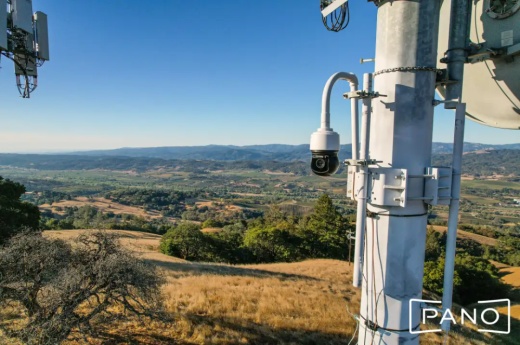What's happening
Wildfire management firm Pano AI will soon bring its services to the Austin area following City Council's approval of a contract with the business on Oct. 5.
The new agreement will see Pano combine human and artificial intelligence with hardware and software systems to observe areas where fires might pop up and, if a fire is sparked, monitor smoke or flame patterns in real time, according to Austin Energy.
Pano's program combines physical observation cameras with AI algorithms that can provide live updates to Austin's emergency and energy control rooms. AE, the Austin Fire Department, other local emergency service agencies and the Texas A&M Forest Service will all have access to Pano's cameras.
Pano's deal with the city utility includes an initial two-year term for $1.18 million that could be extended for an additional three years for $2.05 million more. AE staff said the contract was made possible through an ongoing local state of disaster related to wildfire risk.
“With wildfires, every minute matters and this investment will ensure that we deploy lifesaving resources as quickly as possible," council member Alison Alter said Oct. 5.
The specifics
Pano's systems will add onto other wildfire detection and prevention efforts already underway at AE.
Today, Austin's power utility is working to harden its electric grid with the aid of protective updates and smart technologies, and to create "defensible space" around its power lines through vegetation management, according to AE Wildfire Program Manager Chris Vetromile. He also said AE is using radio sensors to "listen" for unusual signals around power poles that could be warning signs of a problem.
Going forward, Pano's early alert system will be able to help AE target where power shutoffs might be needed during a wildfire, Vetromile said, and to support any fire services responding to a scene.
The Pano system can confirm that a fire's taking place, zoom in on its exact location and then help alert local first responders about the incident within minutes.
"Response time determines whether or not a small flare-up becomes a raging inferno. The early minutes of a fire are critical, and initial response time determines the ultimate threat to lives and property," Vetromile said in an email. "With most wildfires detected by bystanders and reported via 911, it may take up to an hour to detect a fire, verify its exact location and size, and dispatch first responders. Rapid confirmation of potential fires matters just as much as initial detection."
What's next
With city approval to move forward, AE and Pano officials will now nail down the final locations to place new monitoring cameras. The equipment will be installed over the coming months, and the new system will be up and running in early 2024, according to AE officials.
At least 10 Pano stations with 360-degree, high-definition cameras will be deployed at high vantage points in and around AE's service area. The utility says the combination of camera and AI technology will track wildfire activity within a 15-mile radius of the stations.
Beyond AE's central service area in Travis County, the Pano system will also end up surveying portions of Bastrop, Burnet, Hays and Williamson counties. Mayor Pro Tem Paige Ellis said it'll be key to loop in other Central Texas agencies once the system rolls out.
“We want to find a way to make sure that those folks also have the ability to not only monitor the way that they can with these cameras, but expand into their purview other early warning and early alert systems for wildfire risk," she said.
Diving in deeper
Vetromile said AE first became aware of the AI camera technology through a Central Texas utility collaborative, eventually identifying Pano's work as being "at the forefront of the field."
According to AE, Pano systems are already deployed in six U.S. states and two Australian states, and are used by dozens of other utilities, local governments, emergency agencies and private property owners across the country.





